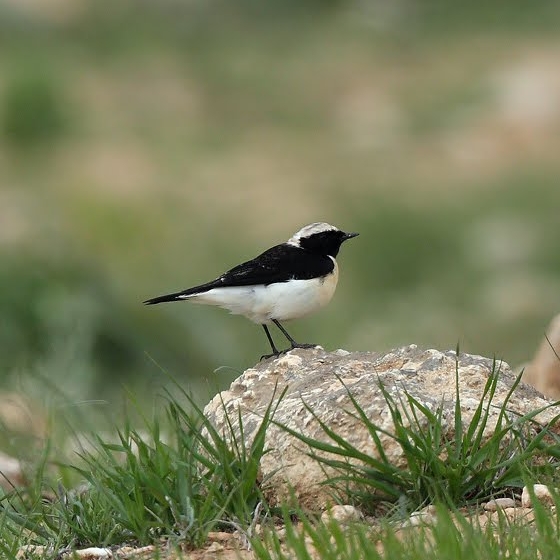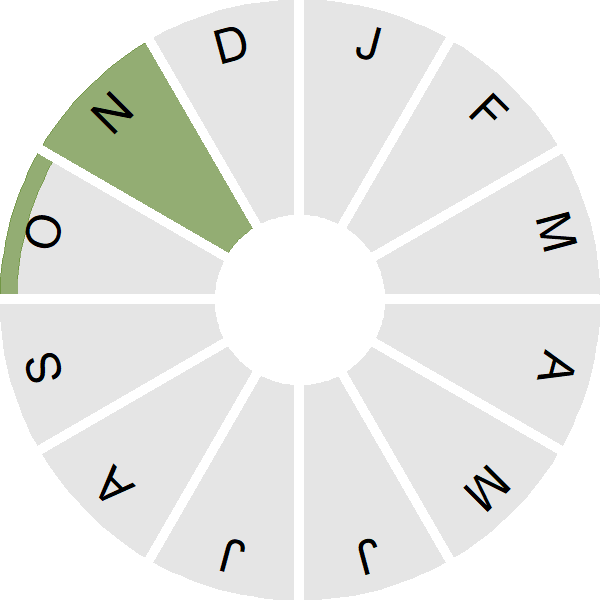Pied Wheatear

Introduction
This smart black and white wheatear is a very rare visitor from south-east Europe, with most records in late autumn (October and November).
Pied Wheatears are migrants and winter in a band across central Africa.

Key Stats
Status and Trends
Conservation Status
Population Size
Population Change
Population trends of this scarce species are not routinely monitored.
Distribution
This species is a rare vagrant and was recorded during Bird Atlas 2007–11 as shown on the map.
Occupied 10-km squares in UK
2007/08–10/11
or view it on Bird Atlas Mapstore.
European Distribution Map
Distribution Change
This vagrant is too rarely reported to map distribution change.
Change in occupied 10-km squares in the UK
Seasonality
Pied Wheatear is a rare vagrant, usually seen in late October and early November.
Weekly pattern of occurrence
The graph shows when the species is present in the UK, with taller bars indicating a higher likelihood of encountering the species in appropriate regions and habitats.

Movement
Britain & Ireland movement
Biology
Survival and Longevity
Survival is shown as the proportion of birds surviving from one year to the next and is derived from bird ringing data. It can also be used to estimate how long birds typically live.
Classification, names and codes
Classification and Codes
- Order: Passeriformes
- Family: Muscicapidae
- Scientific name: Oenanthe pleschanka
- Authority: Lepechin, 1770
- BTO 2-letter code: PI
- BTO 5-letter code: PIEWH
- Euring code number: 11470
Alternate species names
- Catalan: còlit de pit negre
- Czech: belorit belohlavý
- Danish: Nonnestenpikker
- Dutch: Bonte Tapuit
- Estonian: nunn-kivitäks
- Finnish: nunnatasku
- French: Traquet pie
- German: Nonnensteinschmätzer
- Hungarian: apácahantmadár
- Icelandic: Nunnudepill
- Irish: Clochrán Alabhreac
- Italian: Monachella dorsonero
- Latvian: dagla cakstite
- Lithuanian: margasis kultupys
- Norwegian: Svartstrupesteinskvett
- Polish: bialorzytka pstra
- Portuguese: chasco-malhado
- Slovak: skaliarik plešanka
- Slovenian: crnomorski kupcar
- Spanish: Collalba pía
- Swedish: nunnestenskvätta
- Welsh: Tinwen Fraith
More Evidence
More evidence from Conservation Evidence.com
Partners
Citing BirdFacts
If you wish to cite particular content in this page (e.g. a specific value) it is best to use the original sources as linked in the page. For a more general citation of the whole page please use: BTO (20XX) BirdFacts Species: profiles of birds occurring in the United Kingdom. BTO, Thetford (www.bto.org/birdfacts, accessed on xx/xx/xxxx).

